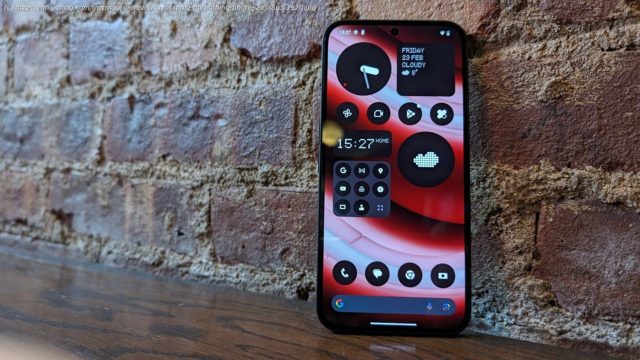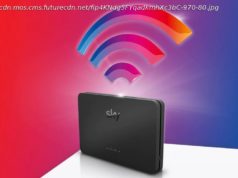A midrange phone for Nothing fans only
Nothing’s $349 Phone (2a) significantly undercuts the company’s $599 Phone (2) in price but still has a standout design, a fast processor for gaming, an impressive camera stack, and enough battery life to take you through the day. However, it’s not easy to get stateside, supports 5G only on T-Mobile’s network, and achieved slower-than-expected results in our cellular speed tests. At $299, the Editors’ Choice-winning OnePlus Nord N30 5G isn’t as flashy or performant, but its widespread availability and better carrier support make it a much more practical midrange phone for US buyers.A Key Point: US Availability Is Limited
The process of getting a Phone (2a) in the US isn’t as simple as for the generally available Nothing Phone (2). In short, you must go through Nothing’s developer program. According to Nothing, you have to fill out an application for the program on its website. The company says it will approve interested parties, including those without typical developer credentials. Once approved as a developer, interested US buyers will be emailed a link to purchase the phone. In certain other countries, such as the UK and India, the phone is available through regular retail channels.Hardware: A Keen Attention to Detail
Despite its affordable price, the Nothing Phone (2a) looks quite premium. To that point, the back sports a clear polycarbonate plastic panel that covers an array of three Glyph LED lights and an intricate pattern that the company says takes inspiration from the Vignelli subway map. The wavy line in the middle covers flexible circuits that connect the motherboard to the display, the SIM card, and the USB-C port on the bottom. A tiny red square on the upper right half is purely an aesthetic accent. I’m a fan of the distinctive design but don’t like how slippery the back feels and how easily it collects fingerprints and dust.
The Phone (2a) measures 6.37 by 3.0 by 0.34 inches (HWD) and weighs approximately 6.7 ounces. Both the OnePlus Nord N30 (6.52 by 2.99 by 0.33 inches, 6.9 ounces) and the $449.99 Samsung Galaxy A54 5G (6.23 by 3.02 by 0.32 inches, 7.1 ounces) are similar in size, but the Phone (2a) is the lightest of the trio. It’s comfortable to hold overall, though somewhat wide.
rning Gorilla Glass 5 cover prevents the screen from cracking from drops of up to around five feet, while the mid-frame is made from aluminum. A dark plastic frame covers the internal aluminum frame and meets the rounded edges of the polycarbonate shell on the back. The Nord N30 and the A54 both have entirely plastic frames for comparison, though the latter uses Gorilla Glass 5 on both the front and back.
On the rear, a circular area at the top indicates the location of the NFC sensor and houses a raised, pill-shaped camera bump for the dual-camera array and flash. The even height and central position of the cameras make the phone slightly easier to use on a flat surface than those that have an asymmetrical camera stack, which leads to wobbling.
The left side of the phone has discrete volume buttons, while the right has a power button. All are easy to reach without stretching, though they feel slightly stiff. Nothing built the fingerprint sensor under the screen. It responded quickly to inputs no matter how I held the phone in testing. Face unlock via the in-display selfie camera is also available if you prefer that method, though it is not as secure as the fingerprint reader. There’s no headphone jack or microSD card slot like on the Nord N30. There are two speakers on the Phone (2a), the earpiece speaker and a down-firing speaker.
As for durability, the Phone (2a)’s IP54 rating is just slightly better than nothing. It means the phone is moderately dust-resistant and can survive splashes of water. The Galaxy A54 has a superior IP67 rating, while the OnePlus Nord N30 has no IP rating at all.
Nothing sells the phone in two colors: Black or Milk. I tested the former.A Big, Clear Display
The 6.7-inch AMOLED screen has a resolution of 2,412 by 1,084 pixels and a variable refresh rate of 30Hz to 120Hz. The display can reach a peak brightness of 1,300 nits, while the typical brightness is 700 nits. The bezels around the screen are thin at just 2.1mm and contribute to the handset’s high-end looks.
For comparison, the Nord N30 has a similar 6.7-inch, 2,400-by-1,080-pixel LCD, while the A54’s 6.4-inch AMOLED panel has a resolution of 2,340 by 1,080 pixels. Samsung leads the pack here; the A54’s screen has the highest pixel density and, like the Phone (2a), can show especially inky blacks thanks to its AMOLED display technology.
I didn’t have any trouble seeing the Phone (2a)’s screen under indoor lighting or outside on most days, though harsh sunlight sometimes affected visibility.






